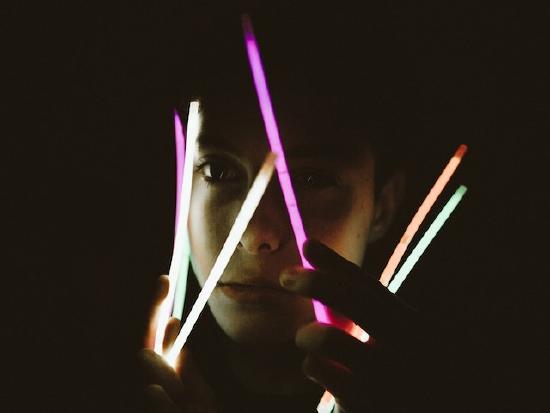Types Of Chemical Reactions Answers
7.two: Evidence of a Chemical Reaction
- Page ID
- 289394
⚙️Learning Objectives
- Place the show for chemical reactions.
In a chemic alter, new substances are formed. In order for this to occur, the chemical bonds of the initial substances intermission, and the atoms that compose them separate and rearrange themselves into new substances with new chemical bonds. When this process occurs, we call it a chemical reaction. A chemical reaction is the process in which one or more substances are inverse into i or more new substances.




To identify a chemical reaction, we look for a chemic change. A chemical change e'er produces ane or more types of matter that differ from the matter present earlier the alter. The formation of rust is a chemic change because rust is a dissimilar kind of matter than the fe, oxygen, and water nowadays before the rust formed. The explosion of nitroglycerin is a chemical change because the gases produced are very different kinds of matter from the original substance.
Diverse signs of a chemical reaction include:
- Change in Color
- Formation of a Gas
- Formation of a Precipitate
- Alter in Aroma
- Change in Temperature
- Something is Burning
- Low-cal is Being Produced
✅Example \(\PageIndex{1}\): Evidence of a Chemic Reaction
Which of the following is a chemic reaction?
- Freezing liquid mercury.
- Adding yellowish to blue to make dark-green.
- Cutting a piece of paper into 2 pieces.
- Called-for natural gas.
- Dissolving salt in water.
Solution
A, B, C, & E involve only physical changes. Burning involves a reaction with oxygen where the reacting materials have been consumed and the products have a unlike chemical composition, so the reply is D.
✏️Exercise \(\PageIndex{1}\)
Which of these involve a chemical reaction?
- Painting a wall blue.
- Mixing baking soda and vinegar to produce a gas.
- Ice cream melting.
- Boiling water.
- Roasting a marshmallow over a flame until it turns brownish.
- Answer
-
B and E
Summary
- Chemical reactions tin can be identified via a broad range of unlike observable factors including change in color, energy change (temperature change or low-cal produced), gas production, formation of precipitate and change in physical properties.
Types Of Chemical Reactions Answers,
Source: https://chem.libretexts.org/Courses/Anoka-Ramsey_Community_College/Introduction_to_Chemistry/07%3A_Chemical_Reactions/7.02%3A_Evidence_of_a_Chemical_Reaction
Posted by: flowersarkly1973.blogspot.com


0 Response to "Types Of Chemical Reactions Answers"
Post a Comment